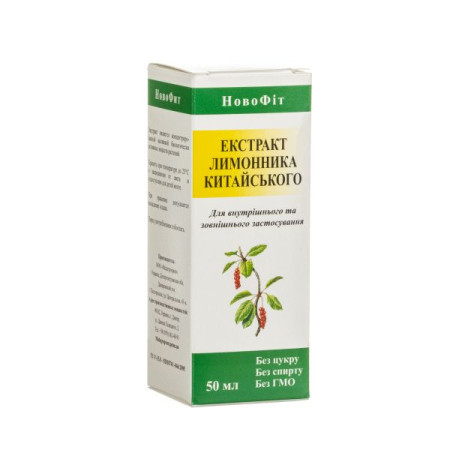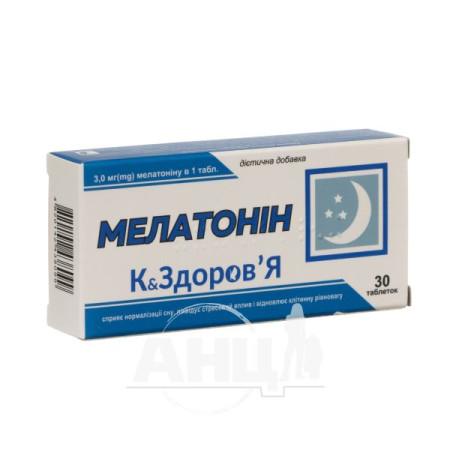Farmalipon turbo for infusions 12 mg/ml 50 ml bottle No. 10

Instructions for Farmalipon turbo for infusions 12 mg/ml 50 ml bottle No. 10
Composition
active ingredient: thioctic (a-lipoic) acid;
1 ml of solution contains 12 mg of thioctic (a-lipoic) acid;
Excipients: meglumine, macrogol 300, water for injections.
Dosage form
Solution for infusion.
Main physicochemical properties: yellowish or greenish-yellow solution.
Pharmacotherapeutic group
Drugs affecting the digestive system and metabolic processes. ATX code A16A X01.
Pharmacological properties
Pharmacodynamics
Thioctic (a-lipoic) acid is a substance that is synthesized in the body and acts as a coenzyme in the oxidative decarboxylation of α-keto acids; it plays an important role in the process of energy formation in the cell. It helps to reduce blood sugar levels and increase the amount of glycogen in the liver. Deficiency or disruption of thioctic (a-lipoic) acid metabolism due to intoxication or excessive accumulation of certain decay products (for example, ketone bodies) leads to disruption of aerobic glycolysis. Thioctic (a-lipoic) acid can exist in two physiologically active forms (oxidized and reduced), which have antitoxic and antioxidant effects. Thioctic (a-lipoic) acid affects cholesterol metabolism, participates in the regulation of lipid and carbohydrate metabolism, and improves liver function (due to hepatoprotective, antioxidant, and detoxification effects). Thioctic (a-lipoic) acid is similar in pharmacological properties to B vitamins.
Pharmacokinetics
Thioctic (α-lipoic) acid undergoes significant changes during the first pass through the liver. There are significant intersubject fluctuations in the systemic availability of thioctic (α-lipoic) acid. It is excreted by the kidneys mainly in the form of metabolites. The formation of metabolites occurs as a result of side chain oxidation and conjugation. The half-life of thioctic (α-lipoic) acid from blood serum is 10-20 minutes.
Indication
Sensory impairment in diabetic polyneuropathy.
Contraindication
Hypersensitivity to thioctic (α-lipoic) acid or to other components of the drug. Heart and respiratory failure, acute phase of myocardial infarction, acute cerebrovascular accident, dehydration, chronic alcoholism and other conditions that can lead to lactic acidosis.
Interaction with other medicinal products and other types of interactions
Thioctic (α-lipoic) acid interacts in vitro with metal ion complexes (e.g. cisplatin), therefore there have been reports of a decrease in the effect of cisplatin when used simultaneously with the drug.
With sugar molecules (for example, with a fructose solution), thioctic (α-lipoic) acid forms poorly soluble complex compounds.
Thioctic (α-lipoic) acid is a metal chelator, so it cannot be used together with metals (iron, magnesium preparations).
Thioctic (α-lipoic) acid may enhance the blood sugar-lowering effect of insulin and other antidiabetic agents, therefore regular monitoring of blood sugar levels is indicated, especially at the beginning of treatment with thioctic (α-lipoic) acid. In some cases, it may be necessary to reduce the dose of insulin and/or oral antidiabetic agent to prevent the appearance of symptoms of hypoglycemia.
Warning: Regular alcohol consumption is a significant risk factor for the development and progression of the clinical picture of neuropathy and, therefore, may interfere with the effectiveness of treatment. Therefore, patients with diabetic polyneuropathy are generally advised to abstain from alcohol. Limiting alcohol consumption also applies to breaks between courses of treatment.
Application features
When using the drug, light-protective black bags should be used, which are placed on top of the vial when administering the drug intravenously.
Do not use any remaining medicine.
The main factor in effective treatment of diabetic polyneuropathy is optimal correction of the patient's blood sugar level.
With parenteral administration of the drug there is a risk of allergic reactions, including anaphylactic shock, so patients should be monitored for such reactions. In case of symptoms such as itching, nausea, malaise, the drug should be immediately discontinued and the necessary therapeutic measures should be taken.
In isolated patients with decompensated or inadequately controlled diabetes and worsening general health, severe anaphylactic reactions associated with the use of the drug may develop.
In the treatment of patients with diabetes mellitus, frequent monitoring of blood glucose is necessary, especially at the beginning of treatment. In some cases, it is necessary to adjust the doses of antidiabetic drugs to prevent hypoglycemia.
During the treatment of polyneuropathy, due to regeneration processes, a short-term increase in sensitivity is possible, accompanied by paresthesia with a feeling of "crawling ants."
Cases of autoimmune insulin syndrome have been reported with thioctic (α-lipoic) acid treatment. Patients with certain HLA (human leukocyte antigen) genotypes, such as HLA-DRB1*04:06 and HLA-DRB1*04:03, are more likely to develop autoimmune insulin syndrome (a disorder of the hormones that regulate blood glucose with severe low blood sugar) with thioctic (α-lipoic) acid treatment. The HLA-DRB1*04:03 allele (susceptibility factor for autoimmune insulin syndrome 1.6) is primarily found in Caucasians and is more common in Southern Europe than in Northern Europe; The HLA-DRB1*04:06 allele (susceptibility coefficient for the development of autoimmune insulin syndrome — 56.6) is found mainly in patients from Japan and Korea.
When diagnosing spontaneous hypoglycemia in patients receiving thioctic (α-lipoic) acid, the possibility of developing autoimmune insulin syndrome should be considered.
Ability to influence reaction speed when driving vehicles or other mechanisms
When using the drug, caution should be exercised when driving vehicles and engaging in other potentially hazardous activities that require increased concentration and speed of psychomotor reactions.
Use during pregnancy or breastfeeding
There is insufficient experience with the use of the drug during pregnancy or breastfeeding, so it should not be prescribed during these periods.
Method of administration and doses
The drug is administered directly from the vial (i.e. without solvent) as an intravenous drip infusion to adults at a dose of 600 mg per day (contents of 1 vial) for at least 30 minutes.
Due to the fact that thioctic (a-lipoic) acid is sensitive to light, the vials should be stored in cardboard packaging until their immediate use.
At the beginning of the treatment course, the drug is administered intravenously. The course of treatment is 2−4 weeks.
For further therapy, use oral forms of thioctic (a-lipoic) acid at a dose of 300−600 mg per day.
Children
The efficacy and safety of the drug in children have not been established, so it should not be prescribed to this age group of patients.
Overdose
Symptoms: nausea, vomiting and headache are possible. When using very high doses of 10 to 40 g of thioctic (a-lipoic) acid in combination with alcohol, severe intoxication is observed, which can lead to a fatal outcome. The clinical picture of poisoning is initially manifested by psychomotor agitation or impaired consciousness and then proceeds with attacks of generalized convulsions and the development of lactic acidosis. The consequences of intoxication may be hypoglycemia, shock, rhabdomyolysis, hemolysis, acute skeletal muscle necrosis, disseminated intravascular coagulation, bone marrow suppression and multiorgan failure.
Treatment. In case of suspected overdose and intoxication (intake of 6000 mg for an adult and > 50 mg/kg of body weight for a child), immediate hospitalization and implementation of generally accepted measures (for example: artificial vomiting, gastric lavage, use of activated charcoal) are indicated. Treatment of generalized convulsive attacks, lactic acidosis and other consequences of intoxications that threaten the patient's life should be guided by modern principles of intensive care and carried out symptomatically. To date, there is no data on the feasibility of using hemodialysis, hemoperfusion or hemofiltration methods within the framework of forced removal of thioctic (a-lipoic) acid.
Adverse reactions
Classification of the frequency of adverse reactions: very common: ≥ 1/10; common: ≥ 1/100 - < 1/10; uncommon: ≥ 1/1000 - < 1/100; rare: ≥ 1/10000 - < 1/1000; very rare: < 1/10000; frequency unknown: it is impossible to determine the frequency based on the available data.
On the part of the immune system
Frequency unknown: insulin autoimmune syndrome (see section "Special warnings and precautions for use").
Skin allergic reactions may occur in the form of rash, urticaria, itching, eczema, as well as systemic reactions up to the development of shock.
Central nervous system
Very rare: change or disturbance of taste sensations, headache, hot flashes, increased sweating, dizziness, visual disturbances. After intravenous administration of thioctic (α-lipoic) acid, convulsions and diplopia have been observed. In most cases, all of these manifestations resolve spontaneously.
Not known: loss of consciousness, seizures.
From the digestive tract
In some cases, with rapid intravenous administration of the drug, nausea, vomiting, diarrhea, and abdominal pain were observed, which resolved on their own.
Hepatobiliary system
Not known: cholestatic hepatitis.
From the side of the hematopoietic system
In isolated cases, petechial hemorrhages in the mucous membranes/skin, hypocoagulation, and thrombophlebitis were observed.
Very rare: hemorrhagic rashes (purpura), platelet dysfunction.
Metabolic disorders
Very rare: due to improved glucose absorption, blood sugar levels may decrease, which may cause symptoms similar to hypoglycemia, such as dizziness, increased sweating, headache, and visual disturbances.
With rapid intravenous administration, pain in the heart area and tachycardia may occur, which resolve on their own.
General adverse reactions and injection site reactions.
Common: after rapid intravenous administration, increased intracranial pressure and respiratory distress syndrome may occur, which resolve on their own.
Very rare: In isolated cases, injection site reactions and weakness have been reported.
Reporting of possible adverse reactions
Reporting of suspected adverse reactions after the registration of a medicinal product plays an important role. This allows for continued monitoring of the benefit-risk balance of the medicinal product. Healthcare professionals should report any suspected adverse reactions through the national pharmacovigilance system.
Expiration date
2 years.
Storage conditions
Store in original packaging at a temperature not exceeding 25 ° C. Keep out of the reach of children.
Incompatibility
Thioctic (α-lipoic) acid solution is incompatible with glucose solution, Ringer's solution, and solutions that may react with SH groups or disulfide bonds.
If necessary, only saline solution can be used as a solvent for administering the drug solution.
Packaging
50 ml in a bottle; 10 bottles in a cardboard pack.
Vacation category
According to the recipe.
Producer
Limited Liability Company "Novopharm-Biosyntez".
Location of the manufacturer and its business address
Ukraine, 11700, Zhytomyr region, Novograd-Volynskyi, Zhytomyrska st., b. 38.
There are no reviews for this product.
There are no reviews for this product, be the first to leave your review.
No questions about this product, be the first and ask your question.












